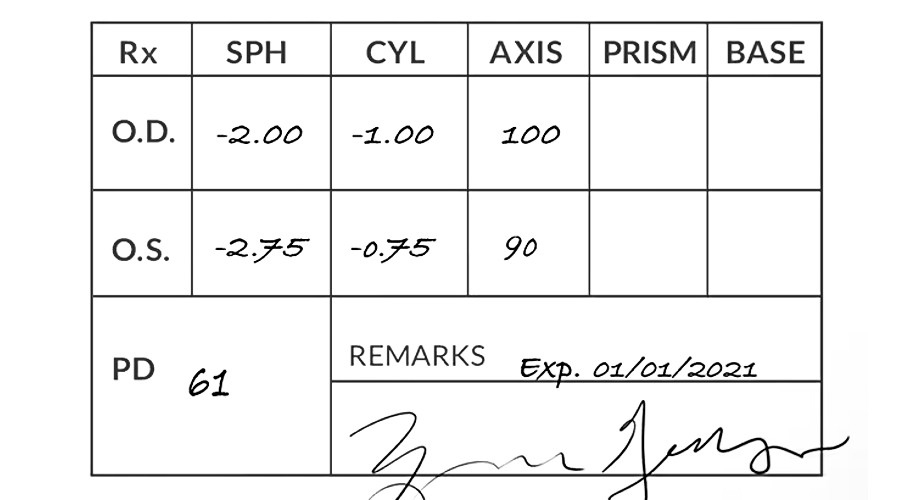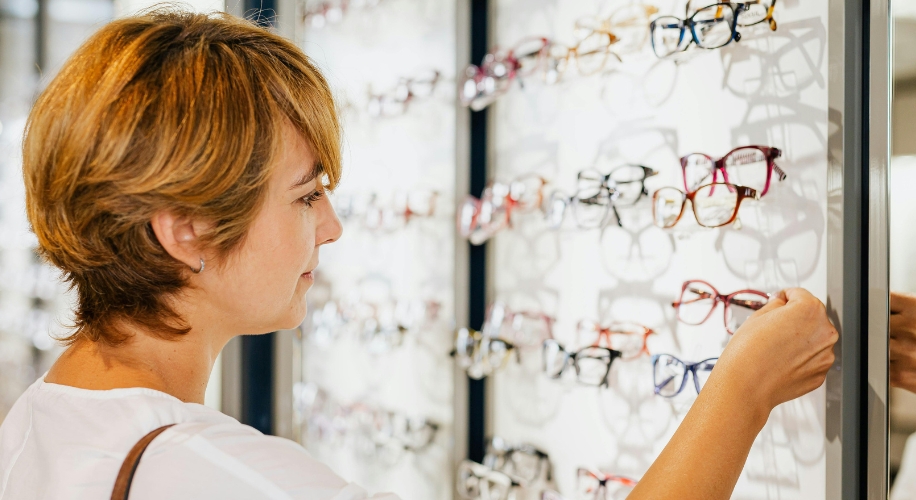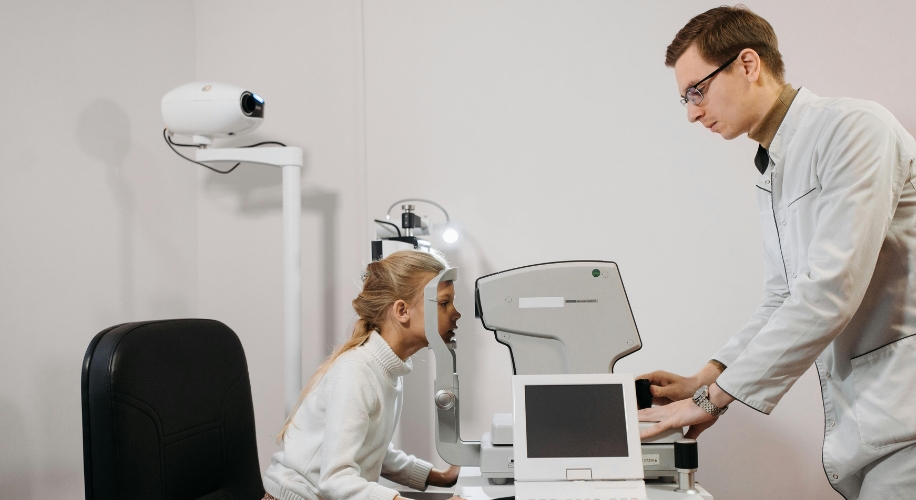How to Read Your Eye Prescription
Understanding your eye prescription can be a bit daunting, especially if you’re new to glasses or contact lenses. But fear not! This comprehensive guide will break down the essential components of an eye prescription, helping you navigate the numbers and symbols with ease. By the end of this post, you’ll feel empowered to read your prescription and make informed choices about your eyewear.
Photo by Ksenia Chernaya
What is an Eye Prescription?
An eye prescription is a detailed document provided by your optometrist after a comprehensive eye exam. It outlines the corrective lenses you need to achieve clear vision. Whether you’re nearsighted, farsighted, or have astigmatism, your prescription will specify the type of lenses that will work best for you.
The prescription also serves as a guide for your optician or eyewear retailer to create lenses tailored to your specific vision needs. This means that understanding your prescription not only enhances your vision but also ensures comfort and effectiveness in your eyewear.
Why Your Prescription Matters
Having a clear grasp of your eye prescription can significantly impact your daily life. Poor understanding can lead to ordering incorrect lenses, which might cause discomfort or poor vision. When you know what each component of your prescription means, you can:
- Make Informed Choices: Knowing what your prescription entails helps you choose the right frames and lenses.
- Communicate Effectively with Professionals: If you have questions or concerns, understanding your prescription allows for clearer communication with your eye care provider.
- Track Changes in Your Vision: Over time, your vision may change. Understanding your prescription helps you recognize when it’s time for another eye exam.
Reading the Prescription Layout
Your prescription will generally be laid out in a table format, typically divided into two sections: one for your right eye (OD) and one for your left eye (OS). Here’s a simplified example:

Understanding the Key Components
To decode your prescription, let’s take a closer look at its main components:
1. Eye
- OD (Oculus Dexter) refers to the right eye.
- OS (Oculus Sinister) refers to the left eye.
2. Sphere (SPH)
The sphere value indicates the lens power needed to correct nearsightedness or farsightedness.
- Nearsightedness (Myopia): If you see a negative sign (e.g., -2.00), it means you are nearsighted. This condition makes distant objects appear blurry while close objects are seen clearly. The negative number indicates that the lens is concave, helping to diverge light rays and improve distance vision.
- Farsightedness (Hyperopia): If you see a positive sign (e.g., +2.00), it means you are farsighted. This condition makes close objects appear blurry while distant objects may be clearer. The positive number indicates that the lens is convex, converging light rays to help improve near vision.
- Plano: If the sphere value is written as “plano” or “pl,” it indicates no refractive error is present in that eye. This means no corrective power is needed, often applicable in cases where one eye may not require glasses.
3. Cylinder (CYL)
The cylinder value measures astigmatism, a common condition caused by an irregularly shaped cornea. This number can also be positive or negative.
- If there’s no astigmatism, this section may be marked as “DS” (no significant astigmatism) or left blank.
- If there is a value, it indicates the degree of astigmatism correction needed. The cylinder helps to correct the blurriness at specific angles in your vision.
4. Axis
The axis is measured in degrees (from 1 to 180) and indicates the orientation of the astigmatism. It tells you where to place the cylindrical power on the lens for optimal correction. The axis is always listed after the cylinder value.
For example, if your prescription shows a cylinder of -1.00 and an axis of 90, it means the astigmatism correction is oriented at 90 degrees.
5. Add (Addition)
If you wear multifocal lenses (like bifocals or progressive lenses), you’ll see an “Add” value, which denotes the additional magnifying power needed for reading or close-up work. This number is typically positive and can range from +0.75 to +3.00 or more.
The Add value is crucial for people with presbyopia, who need help seeing things up close, as it provides the extra power necessary to bring near objects into focus.
6. Prism
Prism measurement is crucial for those who have issues with binocular vision, such as double vision. The prism value indicates how much deviation is needed to align images seen by each eye. It is typically expressed in prism diopters (e.g., 1.0, 2.0) and is often accompanied by a direction (e.g., base up, base down, base in, base out).
Understanding prism measurements is essential for ensuring that both eyes work together effectively. If you have been prescribed prism glasses, your optometrist will explain the specific reason for this addition.
7. Pupillary Distance (PD)
PD is the distance between your pupils, measured in millimeters. This measurement is crucial for ensuring your lenses are correctly aligned with your eyes. It may be listed on your prescription or provided separately.
A precise pupillary distance ensures that the optical center of the lenses aligns with your pupils, which is vital for clear vision and reducing eye strain.
Photo By: Kaboompics.com
What to Do with Your Prescription
Now that you understand your prescription, it’s time to put it to use! You can order glasses from a brick-and-mortar or online retailer. Make sure the prescription is not expired, and double-check the values if you are placing your own order to ensure you get the correct prescription.
Tips for Ordering Glasses or Contacts
- Double-Check Measurements: When ordering, ensure that the values match your prescription to avoid any errors.
- Consider Frame Styles: Choose frames that suit your personal style and face shape.
- Select Lens Options: Many retailers offer various lens coatings and materials. Anti-reflective coatings, for example, can reduce glare from screens and lights.
- Consult an Optician: If you have questions about specific lenses or frames, don’t hesitate to ask an optician for guidance.
- Try Virtual Try-Ons: Many online retailers offer virtual try-on features to help you visualize how different frames will look on your face.
Photo by Pavel Danilyuk
Monitoring Your Eye Health
Remember that understanding your prescription is only one aspect of maintaining good eye health. Regular eye exams are crucial, as your vision can change over time. Here are a few tips for keeping your eyes healthy:
- Schedule Regular Exams: Aim to see your eye care professional at least once every one to two years, or more frequently if you have existing vision problems.
- Report Changes in Vision: If you notice any changes in your vision, such as blurriness or difficulty seeing at night, contact your eye care professional promptly.
- Protect Your Eyes: Wear sunglasses to shield your eyes from harmful UV rays, and use protective eyewear when engaging in activities that could pose a risk to your eyes.
- Follow the 20-20-20 Rule: To reduce eye strain from screens, every 20 minutes, take a 20-second break and look at something 20 feet away.
Conclusion
Reading your eye prescription doesn’t have to be a mystery. By understanding the key components—sphere, cylinder, axis, add, prism, and pupillary distance—you’ll be well-equipped to find the right lenses for your vision needs. Don’t hesitate to reach out to your eye care professional if you have questions or need further clarification.







 Canada
Canada